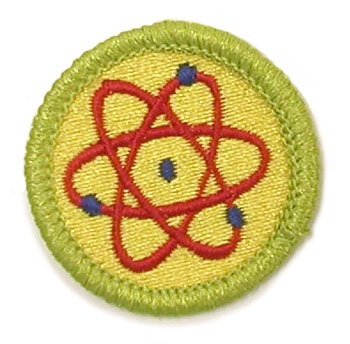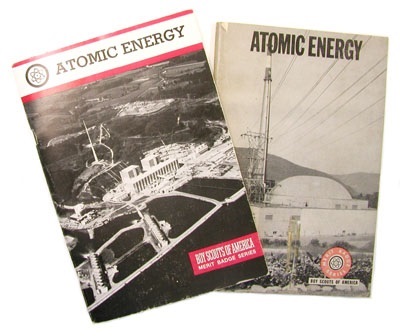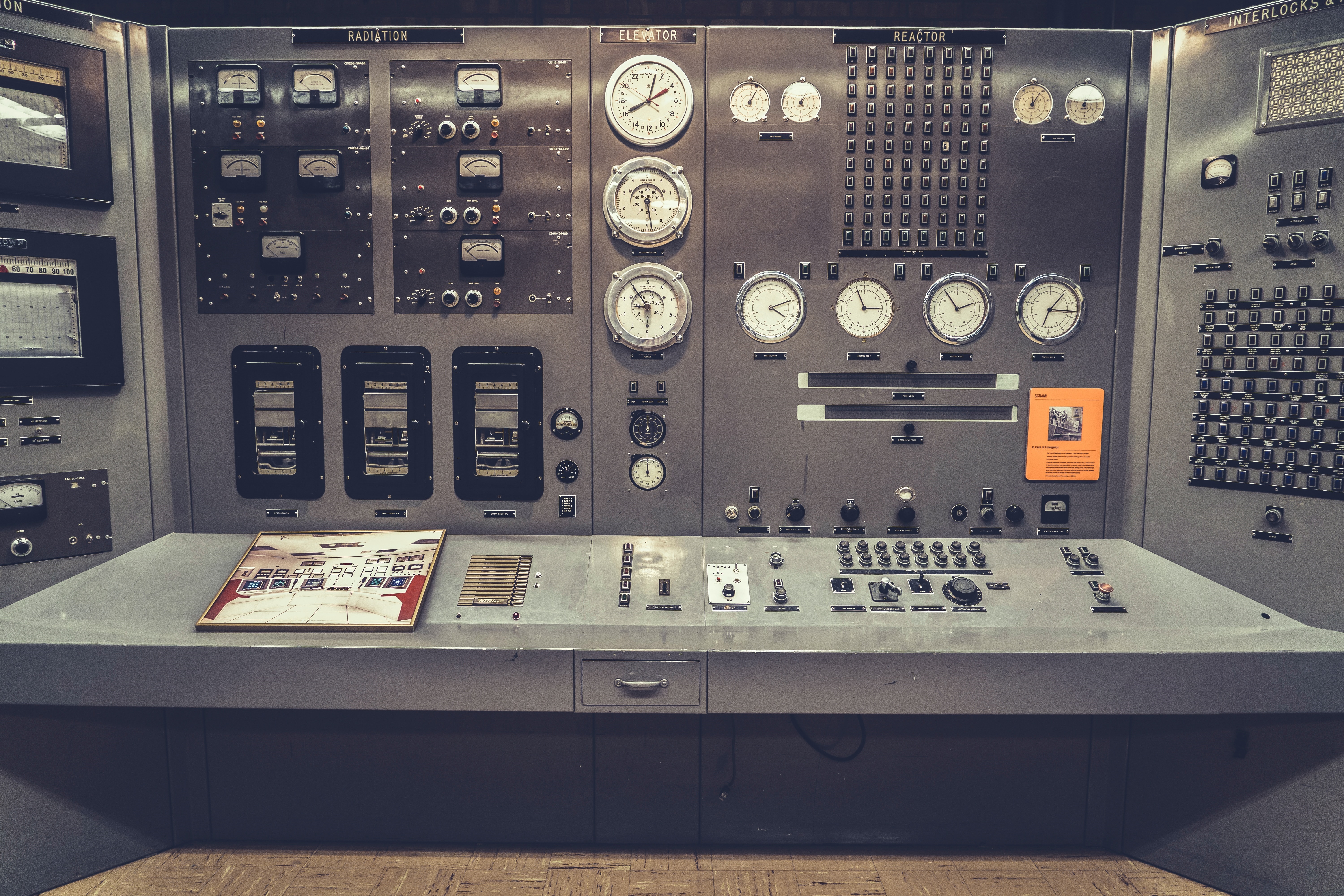
During the 1950s and 1960s, atomic energy was a hot topic. Following the Manhattan Project and all the buzz surrounding atomic war and weapons, the lessons and awareness of this topic trickled down to the next generation. Not only were these messages being found in children’s toys and movies, but education about nuclear power was also on the rise. As a result, the Boy Scouts of America decided to add a new badge to its series of Merit Badges. Here are four fun facts about the Boy Scout Atomic Energy Merit Badge in ORAU’s Museum of Radiation and Radioactivity collection:
1. 104th in the series
Beginning with the first Badges of Merit in 1910, these badges are awards earned by members of the Boy Scouts of America, based on activities within the area of study by completing a list of periodically updated requirements. The purpose of the Merit Badge program is to allow Scouts to examine subjects to determine if they would like to further pursue them as a career or vocation. There are Merit Badges on a wide variety of subjects including first aid, camping, cooking, and swimming. In 1963, the Boy Scouts of America approved the Atomic Energy Merit Badge as the 104th badge in the series.
2. Booklets written by Saul Harris

As with most Merit Badges, a scout had to achieve specific requirements to be awarded the Atomic Energy Merit Badge. According to Paul Frame, Ph.D., a former health physicist at ORAU and the curator of ORAU’s Museum of Radiation and Radioactivity, the specific instructions for receiving the badge were listed in a pamphlet that was produced under the direction of Saul Harris, who worked for the U.S. Department of Health, Education, and Welfare. Another fun fact is that the pamphlet that goes along with the Atomic Energy Merit Badge is not the only item in the collection that was contributed by Harris. He also was responsible for the “Save a Roentgen” program. The purpose of this campaign was to reduce medical exposures to X-rays. One of the buttons from the campaign now resides in the museum collection as well.
3. Variety of requirements
As we mentioned, the requirements for obtaining the Boy Scout Atomic Energy Merit Badge were intense, as they are for most badges. Back in the 1960s, the goal was to teach children everything they needed to know about atomic energy. As a result, the tasks for obtaining the badge varied in difficulty level. Some of the requirements included making a drawing of how nuclear fission happens, learning about some of the historical figures in the field of atomic energy, and knowing the definitions of several terms associated with atomic energy, such as beta particle, isotope, nuclear energy, and radiation. There were also some hands-on projects included, such as building an electroscope or making a cloud chamber.
4. Events happening around the timeframe

We briefly discussed some of the events happening around the time that the Boy Scouts of America decided to introduce this badge to the collection, but to understand why the timing was crucial, we must look at world events. The 1950s saw a lot of interest in atomic energy. While nuclear power plants burst onto the scene in the 1940s, the original ones were not designed to produce electricity. Fast forward to the early 1960s and the Cold War, the threat of nuclear holocaust seemed ever on the horizon, and education about protection from radiation and fallout was crucial. With these two events happening almost simultaneously, it’s easy to see why the Boy Scouts of America designed the Atomic Energy Merit Badge in 1963. In 2005, the badge was renamed to the Nuclear Science badge. With the name change, a new pamphlet was created to show how national laboratories and universities play a role in educating young people about the nuclear industry.
Would you like to learn more about some of the items in ORAU’s Museum of Radiation and Radioactivity? Take the virtual tour today for more information about the history of radiation.